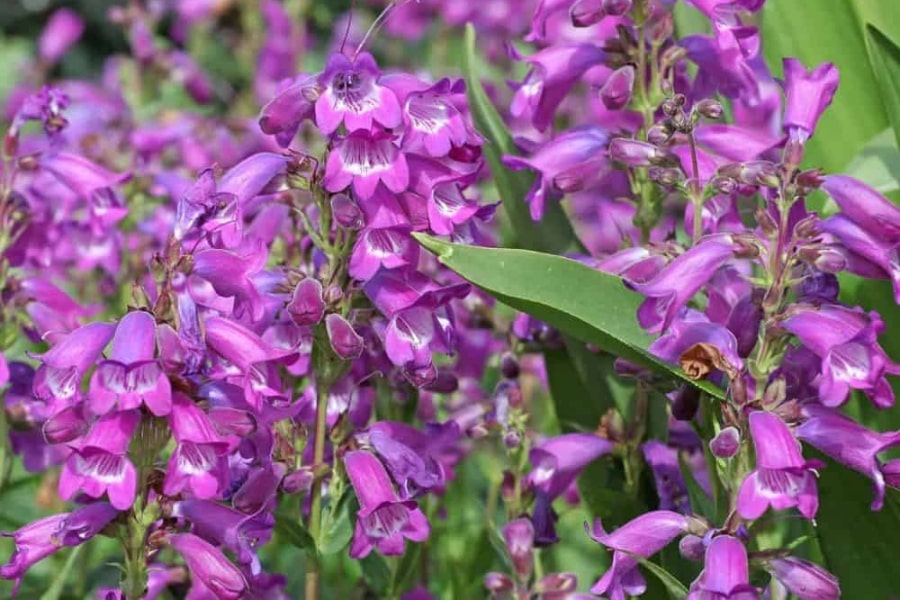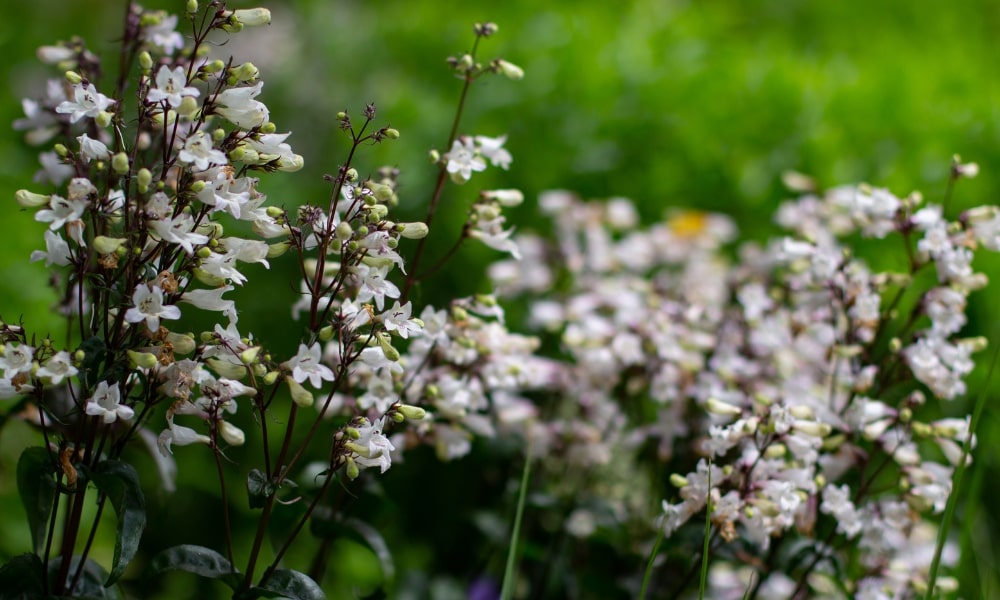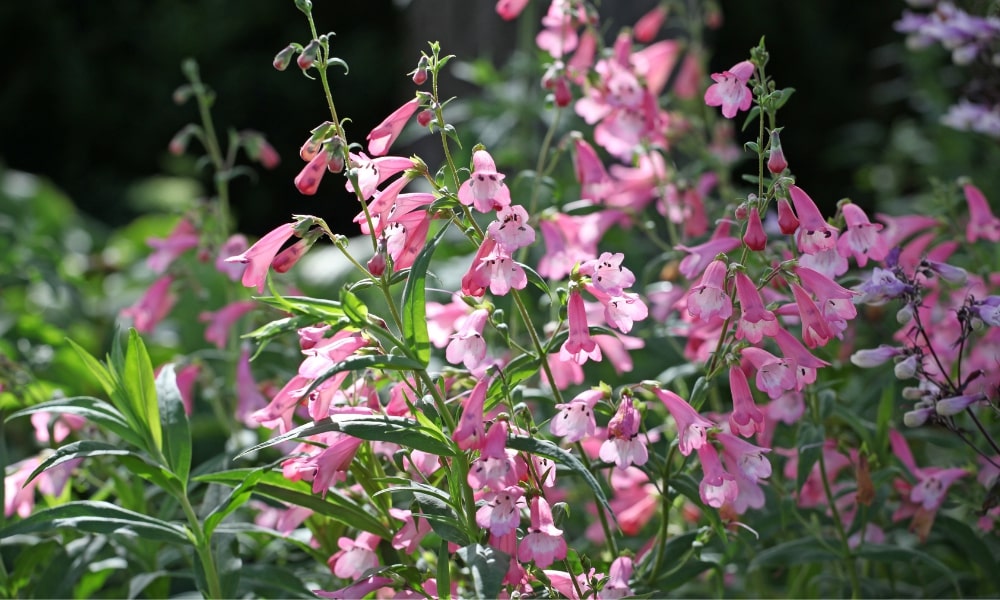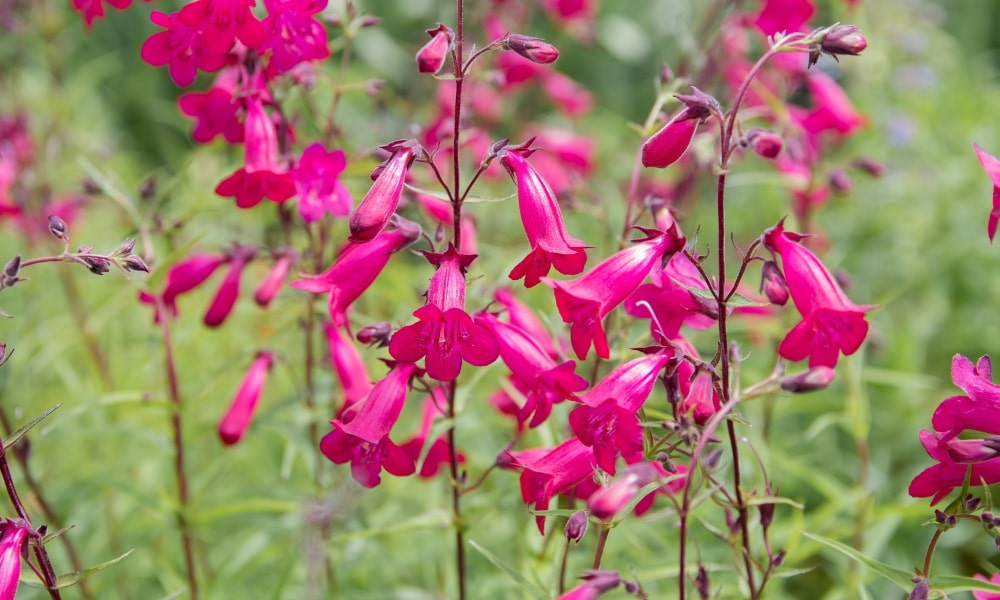Penstemon, commonly known as Beardtongue, is a diverse and captivating genus of flowering plants that encompasses over 250 species. These plants are native to various regions across North America, from the mountains to the prairies. Penstemons have become popular among gardeners due to their stunning blooms, unique characteristics, and adaptability to various growing conditions. The common name “Beardtongue” actually comes from the fuzzy hairs often found inside the plant’s flower, but to the untrained eye, it seems more like nature’s whimsical naming experiment. Maybe the botanist who coined it was having a laugh—or just running out of ideas! Either way, the name definitely doesn’t do justice to the beauty and appeal of this hummingbird magnet.

Our Selection of Penstemon
At Martin Garden Center, we are growing 6 varieties of Penstemon in 2025. We will also carry several varieties of Penstemon supplied to us by our local vendors in 4″ containers. In Spring, we will see many varieties available but as we progress into Summer, we are less likely to have these beautiful plants available.
We are growing the following varieties in 2025:
Growing and Caring for Penstemon
Most species prefer full sun to light shade, receiving at least 6 hours of direct sunlight per day. Ample sunlight promotes sturdy growth and prolific flowering, enhancing the visual impact of these stunning plants. While some varieties can tolerate partial shade, providing adequate sunlight is essential for vibrant blooms and robust foliage.
Well-draining soil is crucial for the successful cultivation of Penstemons. These plants prefer soil that isn’t waterlogged, as excessive moisture can lead to root rot and other issues. Amending the soil with organic matter, such as compost, helps improve drainage and soil structure, ensuring optimal root health and growth conditions. Penstemons also appreciate slightly alkaline to neutral soil pH levels, typically 6.0 to 7.5. Maintaining proper soil pH helps plants access essential nutrients and minerals, contributing to overall vitality.
Watering practices play a significant role in caring for penstemons. While they are relatively drought-tolerant once established, consistent moisture is essential during their initial growth and flowering stages. Water deeply and thoroughly when the soil’s top inch is dry, but allow the soil to dry out between waterings to prevent waterlogged conditions. Applying a layer of mulch around the base of penstemon plants helps retain soil moisture, suppress weed growth, and maintain a more consistent soil temperature.
Deadheading spent flowers is a must with Penstemon as it encourages further blooming. Wait until the spike of flowers starts looking unattractive and remove it to the base. Many new spikes are sure to follow. In late Fall or early Spring, pruning back the foliage to a few inches above the ground helps rejuvenate the plants and promotes vigorous growth in the following season.

Size and Shape
Penstemons exhibit a wide range of sizes and shapes, with species ranging from low-growing ground covers to tall, upright perennials. The height of Penstemons can vary from a few inches to several feet, depending on the species and cultivar. Some compact varieties, such as Penstemon pinifolius, form mounds of needle-like leaves that reach about 6-12 inches in height. On the other hand, species like Penstemon digitalis can grow up to 3-4 feet tall, creating striking vertical accents in the garden.
Leaves and Flowers
The leaves of Penstemon plants are typically lance-shaped or ovate, and they can vary in size and texture depending on the species. The color of the leaves ranges from vibrant green to gray-green, and some species, like Penstemon gloxinioides, even have bronze or purple-tinged foliage. The foliage of Penstemons adds visual interest to the plant even when it is not in bloom.
One of the most attractive features of Penstemons is their showy and intricate flowers. The color palette of Penstemon flowers is incredibly diverse, encompassing shades of white, pink, purple, blue, red, and even yellow. The throat of the flower often bears unique markings or contrasting colors, adding to its visual appeal. The flowers are borne on tall, slender stalks, creating elegant spires that rise above the foliage. Penstemon is often chosen as a non-toxic substitution for foxglove. The tubular flowers are very attractive to hummingbirds.

Uses in the Garden
Penstemon is a striking addition to any garden, known for its tall, elegant spikes of tubular flowers that attract hummingbirds, bees, and butterflies. Pairing Penstemon with other drought-tolerant perennials like Salvia, Echinacea, or Yarrow creates a dynamic, pollinator-friendly planting that requires minimal upkeep. Its upright form makes it an excellent choice for the middle or back of a flower bed, where it provides vertical interest without overpowering surrounding plants.
For a more naturalized look, Penstemon blends beautifully into prairie-style plantings and native gardens, complementing ornamental grasses like little bluestem and switchgrass. It also works well in cottage gardens, where its long-lasting blooms provide a continuous source of nectar for pollinators. Because many Penstemon varieties are semi-evergreen, they offer year-round structure and interest even after their flowers fade. Whether used as a focal point or woven into a mixed border, this hardy perennial brings beauty, resilience, and wildlife value to any landscape.

Frequently Asked Questions
Do Hummingbirds Like Penstemon?
Yes, hummingbirds love Penstemon! Its tubular flowers are perfectly shaped for hummingbirds to sip nectar, making it one of the best plants to attract them to the garden. The bright red, pink, purple, and blue blooms of many Penstemon varieties are particularly appealing to these tiny pollinators. Planting Penstemon in a sunny spot alongside other nectar-rich flowers like Salvia and Bee Balm can create a hummingbird-friendly habitat.
Is Penstemon Deer Resistant?
Yes, Penstemon is generally considered deer-resistant due to its slightly bitter-tasting foliage and tough, semi-woody stems. While no plant is completely deer-proof, deer tend to avoid Penstemon in favor of softer, more palatable plants. This makes it a great choice for gardens in areas where deer browsing is a concern. However, during times of food scarcity, deer may still sample it, so planting alongside other deer-resistant plants like yarrow, lavender, or salvia can help further deter them.
Do Penstemon Die Back in Winter?
Penstemon behavior in winter depends on the variety and climate. In warmer regions (USDA zones 7-10), many Penstemon varieties remain semi-evergreen, keeping some foliage throughout the season. However, in colder climates (zones 5-6), most will die back to the ground after the first frost but return in spring from their root system. To help protect the plant in harsher winters, adding a layer of mulch around the base can provide insulation. Even if the top growth dies back, Penstemon is a hardy perennial and will typically regrow once temperatures warm up.
